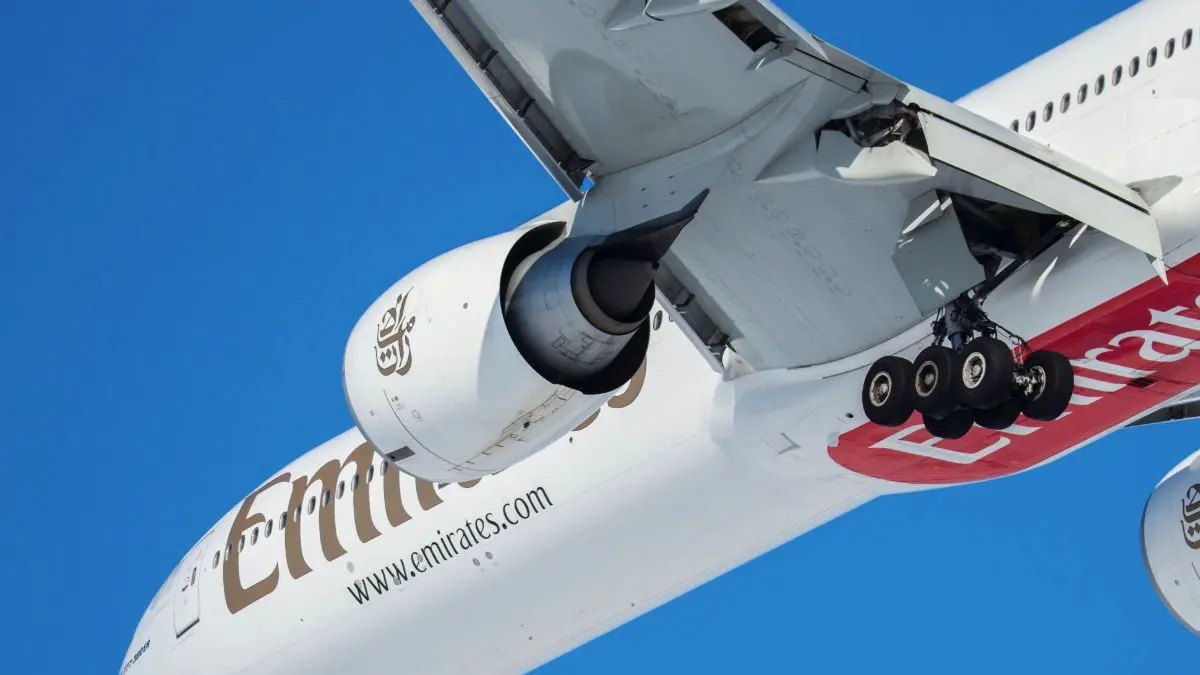
The Engines for Boeing 777: A Closer Look
The popular Boeing 777 is a revolutionary aircraft. Here are the three engines that powered its success.
Table of Contents
The Boeing 777 is the world’s largest twin-jet airliner. With over 2000 orders placed by more than 60 customers, it is also the most popular wide-body airliner on the market. Behind the popularity were three powerful engines for the Boeing 777.
The Triple Seven requires significant power, and for that job, Boeing offers some of the most powerful airline engines in the world.
When the first commercial Boeing 777 flight took off in 1995, there had been nothing like it before in the skies. It was the largest-ever twin-jet created, wide-bodied yet fuel-efficient.
The Triple Seven was the first commercial aircraft that was designed entirely via a computer. Guiding its takeoff to instant airline popularity were three powerful engines for the Boeing 777: the General Electric GE90, the Rolls-Royce Trent 800, and the Pratt & Whitney PW4000.
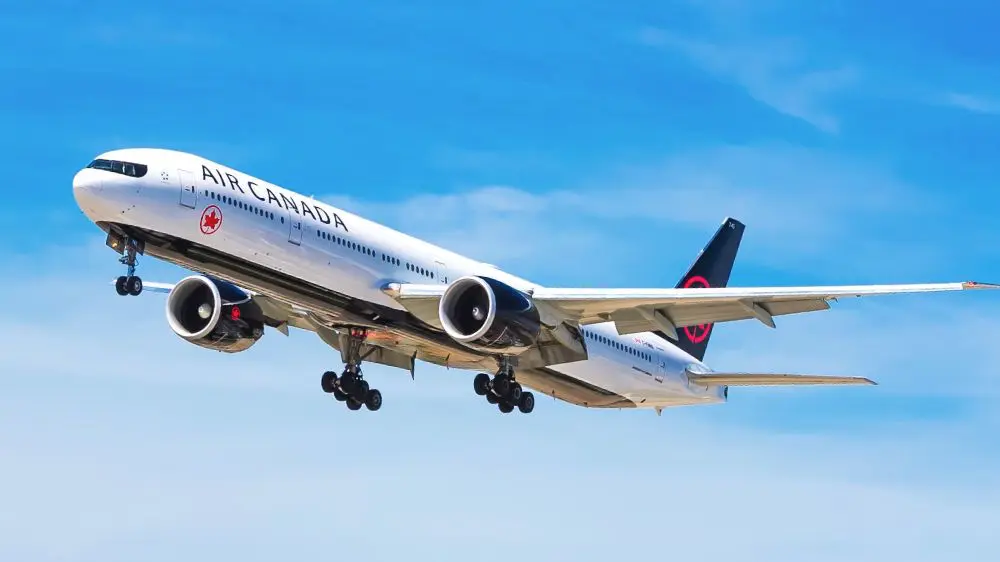
More than 25 years after its first flight, the engines for Boeing 777 still impress with game-changing efficiency, range, and thrust.
The engines are as revolutionary as the Boeing 777 itself. They are among the most powerful airline engines in the world.
We take a deeper look at the engines for the Boeing 777.
The General Electric GE90 Family
General Electric’s GE90 family of engines was created by GE Aviation solely for the Boeing 777. Until 2020, it was the largest jet engine ever built. That year, its sister engine, the GE9X, surpassed it in size but not power.
According to GE, since first revving up a 1995 British Airways flight, the GE90 has logged 100 million flight hours and 14 million cycles. It was a pioneer in engine technology, using composite fan blades for the first time in aviation.
The blades are still striking: they weigh less than 50 pounds and measure over 4 feet, beautifully curved to make it more aerodynamic. General Electric uses an epoxy matrix combined with carbon fiber witch accounts for its lightweight and tremendous strength. The optimized design makes it quieter, even with its enviable thrust.
How enviable? The GE90-115B engine notched a record 127,900 pounds of thrust in 2002. That engine fan blade is even on display in the Museum of Modern Art in New York.
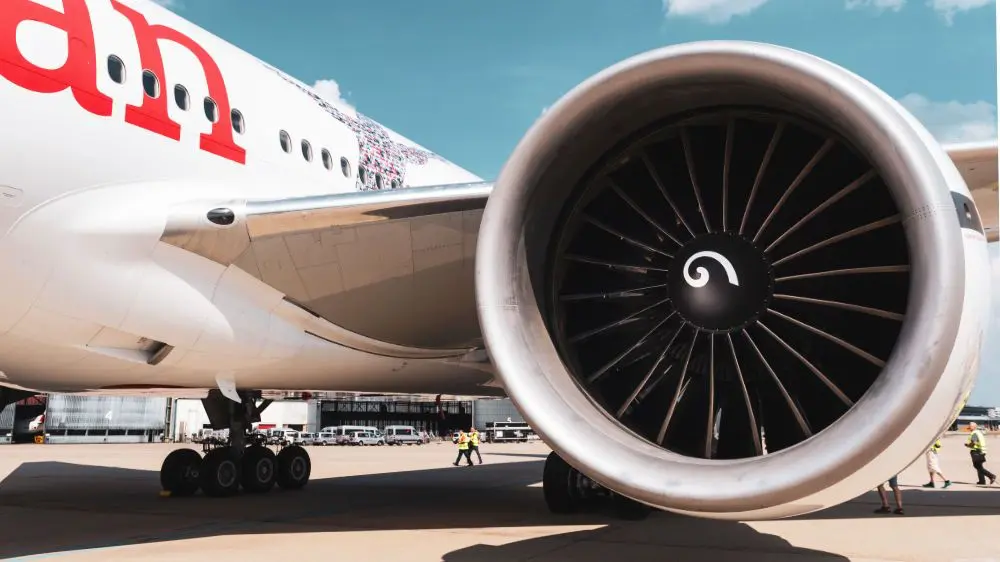
The GE family of engines for Boeing 777 also includes the GE90-94B engine, which rates 94,000 pounds of thrust and powers both the Boeing 777-200 and 777-300.
The GE90-115B engine ups the ante with up to 115,000 pounds of thrust, powering the longer-range Boeing 777-200LR, 300ER, and Freighter version. On the Boeing 777-300ER, 777-200LR and 777F it is the only engine available.
The latest model, the larger-than-life GE9X, is a turbofan made just for the Boeing 777X and continues to improve fuel efficiency.
The Rolls-Royce Trent 800
Another engine option for the Boeing 777 family is what its creator calls “the classic choice.”
The high-bypass turbofan, axial flow Rolls-Royce Trent 800, which began service in 1996, has accumulated 29 million flying hours and 5 million cycles, with thrust ratings ranging from 77,000 to 95,000 pounds of force depending on variant.
It utilizes a three-shaft architecture and boasts a 110-inch fan (cm), with a five-stage axial turbine, an eight-stage IP compressor, and a 6-stage HP compressor, both powered by a turbine that’s single-stage.
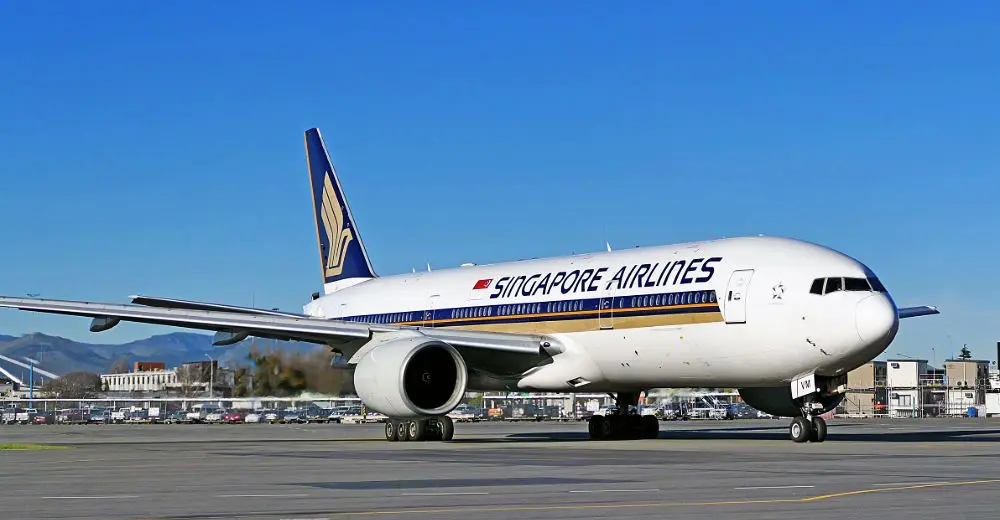
It’s also lighter than its Boeing 777 engine competitors. A Boeing 777 that uses a Rolls-Royce Trent 800 is 8.000 pounds (3.628,7 kg) lighter than one with the GE90 and 5.400 pounds (2.449,4 kg) lighter than a place with Pratt & Whitney models, according to Rolls-Royce. Airlines use the weight savings for more payload onboard.
That has given it an edge in engines for Boeing 777. Compared to the GE90 and PW4000, the Trent 800 accounts for around 40% of the market share for Boeing 77 engines.
Known for its reliability and use on earlier (or “classic”) Boeing 777 models, the Trent 800 (named for the River Trent in England) has a new EP package that also helps bring down fuel costs. Launched in September 2014, the EP package helps airlines save up to $200,000 a year in fuel a year, says the company.
The Trent 800 may not be in the Museum of Modern Art, but it has been deemed museum-worthy. You can check it out at the Imperial War Museum Duxford in Cambridgeshire, England. It is also on display in Derby, Derbyshire, England, as part of the Rolls-Royce Heritage Trust Collection.
The Pratt & Whitney PW4000
The Pratt & Whitney PW4000 is a bit old-school (it was introduced in 1987). But as an option for engines for Boeing 777, it was contemporary with both the GE90 and Trent 800 models.
Entering service on the Boeing 777 in 1995 with about 60,000 pounds of takeoff thrust, Pratt & Whitney has steadily increased its thrust capacity since then, with the PW4090 model hitting 90,000 pounds of force in 1997 and the PW4098 bringing it up to 98,000 pounds of thrust when it was introduced in 1999 on the Boeing 777-300.
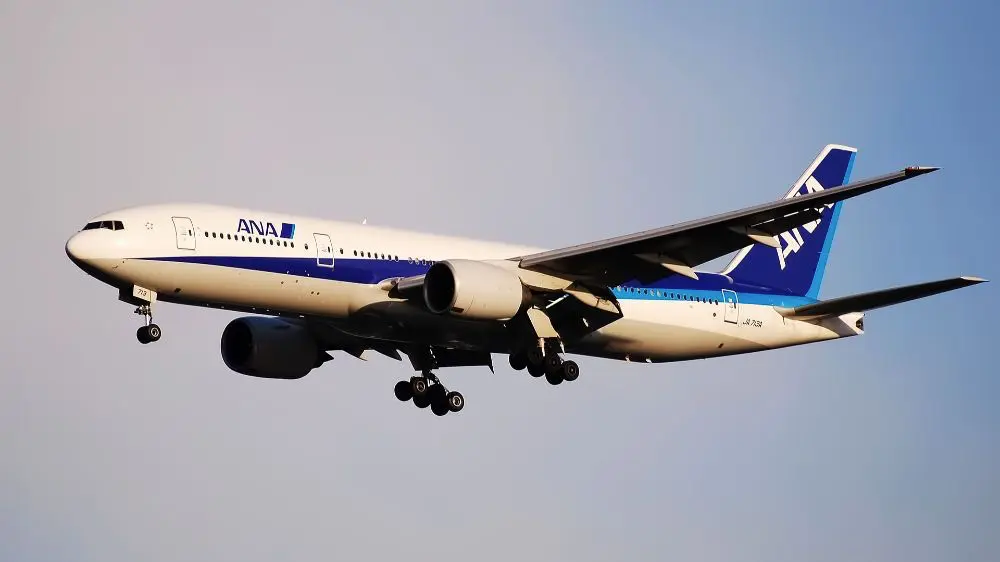
By 2000, PW4000 engines had logged more than 40 million hours in the skies and notched over 135 million flight hours between 1987 and 2017.
Pratt & Whitney impressed out of the gate with the PW4000, the first model in its high-trust engine family. Touting low emissions and noise for the PW4000, Pratt & Whitney continues to innovate.
The PW4000 now comes with the company’s TALON (or Technology for Advanced Low NOx) combustor, making the Boeing 777 engine capable of even lower emissions and cleaner burning.
The PW4000 has developed a stellar reputation for value, the durability of its turbine, and its fuel economy. Just like the GE90 and the Rolls-Royce Trent 800.
Why Are There Different Engine Options?
As Boeing and Airbus design and build their aircraft, you would assume they would equip them with the engine that fits the aircraft best.
The reality is not that simple, though.
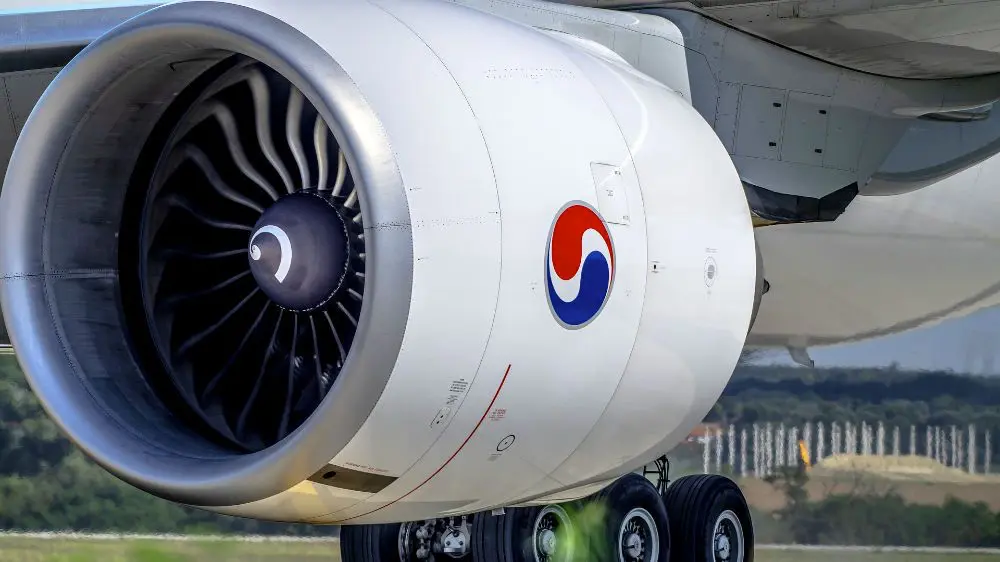
Different airlines have various requirements for their fleets. When choosing between engines for their new aircraft, some are more suitable than others based on several factors.
One factor to consider is what engines are best for short or long flights. Engine costs, both acquisition, and running costs, and expected engine life also plays a role. Politics may also influence the airline’s choice of engines. Airlines based in America might be more inclined to choose an engine made in the US. Country tariffs could also affect the engine price.
Having only a single-engine model available on an aircraft also puts the aircraft manufacturer open to risks. If the engine manufacturer experiences problems, the aircraft production, and delivery could be affected negatively. That opens a significant advantage to competitors.
Moreover, the airline’s technical personnel might be used to working with a particular engine model, and tools and spare part availability also come into play. Working with only one engine type is more effortless.
Wrapping Things Up
The engines for Boeing 777 are powerful and efficient. All three engine families deliver excellent performance for the world’s most popular wide-body twin-jet. In fact, the Triple Seven is powered by the world’s most powerful airline engines.
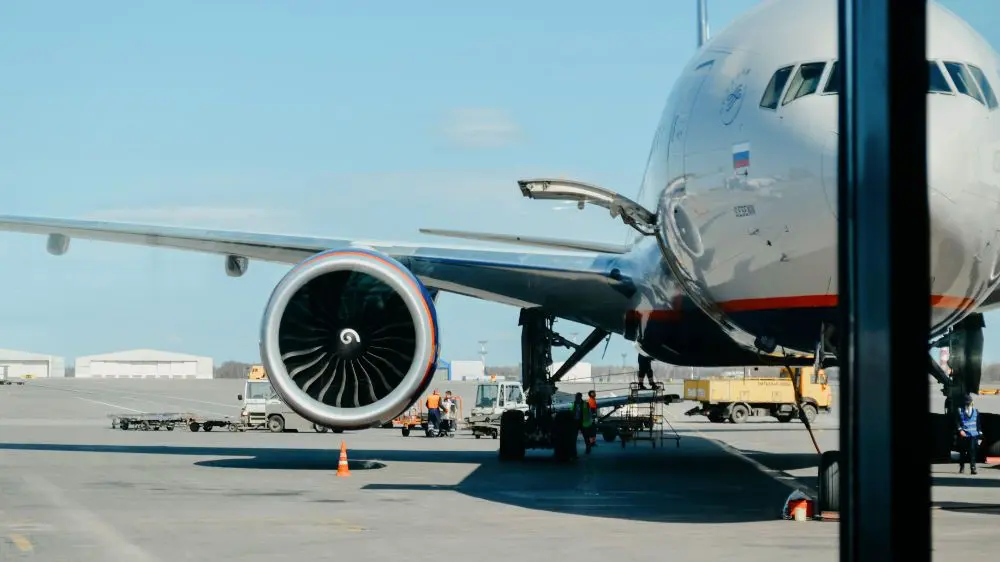
General Electric developed their GE90 engine specifically for the Boeing 777, and it is the most powerful airline engine in the world. Its advanced composite fan blade technology made it a pioneer when introduced into service in 1995.
The most popular 777 engine, however, is the Rolls-Royce Trent 800. It has secured orders for 40% of the Boeing 777 market. This tremendous popularity of the Trent 800 is partly due to its low weight. Rolls-Royce says a Trent 800-powered Boeing 777 is 8.000 (3.628,7 kg) lighter than one with the GE90.
The Pratt & Whitney PW4000 is older but still contemporary with the GE90 and Trent 800. Pratt & Whitney has steadily increased the thrust since its introduction on the Boeing 777 in 1995. The low emission and noise levels have complimented the excellent reliability that matches the GE90 and Trent 800.
Looking ahead, the more advanced evolvement in the Triple Seven family is the Boeing 777X. The new General Electric GE9X exclusively powers this latest series of long-range wide-body twin-jets. The GE9X engine takes efficiency and performance to the next level.
Planenerd Newsletter
Join the newsletter to receive the latest updates in your inbox.






